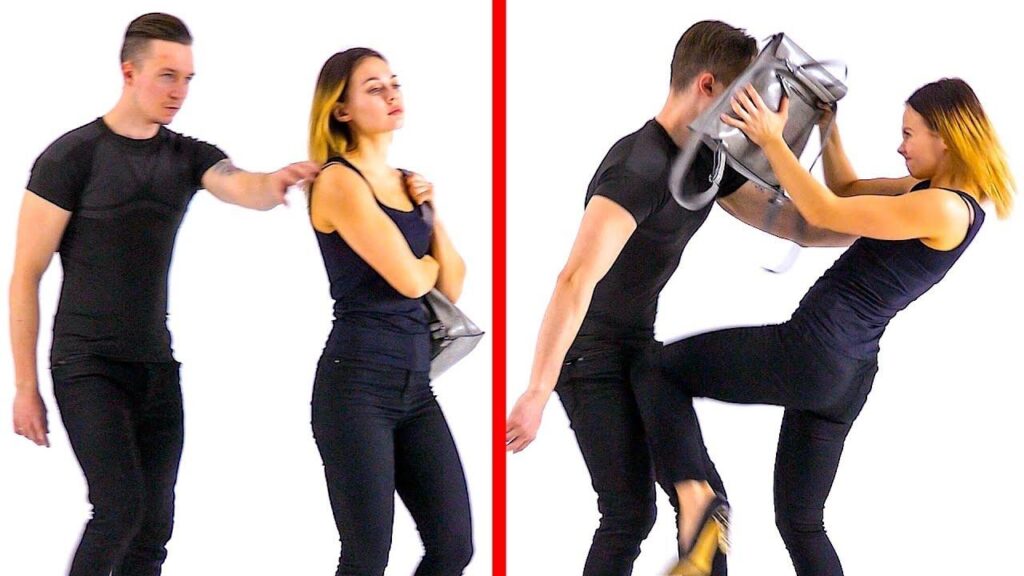Table of Contents
- Understanding the Principles of Effective Self-Defense During Retreat
- Key Techniques for Maintaining Control While Moving Backward
- Essential Safety Tips for Securing Your Escape Route
- Training Strategies to Build Confidence and Situational Awareness
- The Way Forward
Understanding the Principles of Effective Self-Defense During Retreat
Effective self-defense during retreat relies heavily on maintaining situational awareness and controlled movements. As you step back, your goal is to minimize exposure while continuously assessing your attacker’s actions. It’s crucial to keep your body positioned to defend, ensuring you have enough distance to respond to sudden advances. Employing defensive stances that protect vital areas, such as the head and torso, while keeping your center of gravity low, enhances your balance and mobility. This preparation enables swift, fluid transitions between defense and escape, making every step calculated rather than reactive.
Incorporating specific techniques can improve your safety and confidence when retreating. These include:
- Use of striking countermeasures like quick palm strikes or elbows to create necessary space,
- Strategic footwork that allows you to pivot and keep your attacker within your field of vision,
- Controlled breathing to maintain calm and clear thinking under pressure.
Key Techniques for Maintaining Control While Moving Backward
Maintaining control while moving backward requires a blend of awareness, posture, and precision. First, keep your center of gravity low and your knees slightly bent to boost stability. Avoid leaning too far back as this shifts your balance and restricts mobility. Instead, engage your core muscles to remain grounded and agile. It’s crucial to practice controlled foot placement-step back deliberately, placing the ball of your foot down first to respond quickly to sudden threats without compromising your stance.
Equally important is managing your upper body and hands effectively. Keep your eyes fixed on your assailant while positioning your hands in a ready guard to protect vital areas and block potential strikes. Incorporate smooth, small backward steps rather than large, hurried movements to maintain spatial awareness. Regular drills focusing on
- visual tracking,
- balance retention, and
- hand-eye coordination
Essential Safety Tips for Securing Your Escape Route
When it comes to making a quick exit during a dangerous situation, prioritizing clarity and awareness is paramount. Start by mapping out multiple exit paths in advance, considering potential obstacles and environmental hazards. This preparation allows for fluid decision-making when time is critical. Use visual markers or mental cues to recognize safe passages and avoid confined spaces that could limit mobility or create choke points for an aggressor. Maintaining a clear line of sight while moving ensures you can anticipate threats and adjust your steps accordingly.
Additionally, securing your retreat means integrating strategic protective measures without sacrificing speed. Keep your body low and your hands free to defend if necessary, but avoid unnecessary dramatics that could slow your pace. Employ subtle distractions, like sudden changes in direction or brief concealment behind obstacles, to disrupt an attacker’s focus. Remember, the goal is to preserve your physical and mental stamina, so pacing yourself while remaining vigilant is crucial. Here are key points to remember:
- Identify safe zones along your escape route to pause and reassess if needed.
- Minimize noise by avoiding loose gear or clothing that can draw attention.
- Use natural cover to shield yourself without compromising visibility.
- Maintain communication with allies if possible, coordinating movement silently.
Training Strategies to Build Confidence and Situational Awareness
Developing confidence and situational awareness requires consistent, realistic practice that simulates potential threats in varying environments. Incorporate scenario-based drills where trainees respond to unexpected challenges, such as sudden advances or environmental distractions. Utilizing role-play exercises with partners who adopt unpredictable behaviors fosters adaptability and quick decision-making. Additionally, practicing in diverse locations-from dimly lit alleys to crowded public spaces-helps condition the mind to stay alert regardless of surroundings, making self-defense responses more instinctual and fluid.
Integrating mindfulness techniques alongside physical training amplifies situational awareness by enhancing focus and sharpening the senses. Techniques like controlled breathing and rapid threat assessment can be drilled during warm-ups and cool-downs. To reinforce these skills, encourage trainees to maintain a mental checklist in daily life:
- Constantly scan surroundings for exits and cover
- Identify potential threats by body language and intent
- Practice safe distancing to enable quick retreat
- Develop verbal de-escalation skills to buy time
The Way Forward
Mastering self-defense techniques while retreating safely is an essential skill that empowers you to protect yourself without escalating danger. By combining awareness, tactical movement, and effective defense, you enhance your ability to disengage from threats confidently and responsibly. Remember, the ultimate goal is to preserve your safety and exit harm’s way with control and composure. Keep practicing these strategies regularly, stay vigilant, and prioritize your well-being-because in self-defense, sometimes the smartest move is knowing when and how to step back. Stay safe out there!Check Our Other Blogs
- StunGun – Your Trusted Source for Stun Guns, Laws, and Self-Defense Tips
- PepperSprayLaws – Your Trusted Resource for Pepper Spray Information
- StunGunLaws – Your Trusted Guide to Stun Gun Legality and Safety




